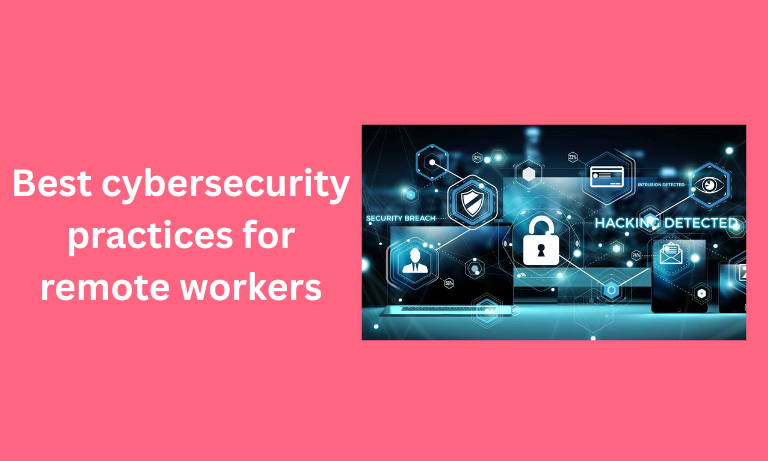Let’s face it, working from home has its perks. Pajamas all day? Yes, please. Skipping the commute? Absolutely. But with all that freedom comes a big ol’ catch: cybersecurity. As the remote work revolution charges on, the digital world is swarming with risks. The truth is, hackers love an unlocked virtual door, and guess what? Remote workers often leave it wide open without even knowing it. So, what are the best cybersecurity practices for remote workers? Buckle up, because we’re diving into the nuts and bolts of staying digitally safe while enjoying the remote lifestyle.
Remote Work, Real Threats: The Best Cybersecurity Practices for Remote Workers
Working from a beachside cabana sounds dreamy until a hacker hijacks your unprotected Wi-Fi. That’s the double-edged sword of remote life. The cybersecurity risks of working from home are very real, and they’re not just targeting big corporations anymore. Freelancers, remote employees, and digital nomads are no one’s off the radar.
So, how can you keep the digital wolves at bay? Start here:
Lock It Down: Use Strong, Unique Passwords
Let’s get this straight, password123 isn’t cutting it. Use a mix of upper and lowercase letters, numbers, and symbols. Better yet, use a password manager. It’s like a digital vault that remembers everything, so you don’t have to.
Enable Two-Factor Authentication (2FA)
This extra layer of security is a lifesaver. Even if someone guesses your password, they still need a second code, usually sent to your phone, to get in. It’s like having a bouncer outside your virtual front door.
Don’t Trust Public Wi-Fi
Sure, the coffee shop vibes are great, but public Wi-Fi is like a welcome mat for hackers. If you must use it, connect through a Virtual Private Network (VPN). It encrypts your data and keeps prying eyes out.
Cybersecurity in the Age of Remote Work: Beyond the Basics
You’ve got the basics covered. Great. But with remote work becoming the norm, threats are evolving, and so should your defenses. Time to level up your game.
Keep Devices Updated
We get it—those update notifications are annoying. But skipping them? Risky business. Updates patch up vulnerabilities that cybercriminals exploit. So, hit that “Install Now” button like your data depends on it because it does.
Secure Your Home Network
Here’s a wild thought: When was the last time you changed your home Wi-Fi password? If it’s still “admin” or the default router name, we’ve got a problem. Secure your network with a strong password and change your router’s default login credentials.
Use Work-Only Devices
Mixing personal and professional stuff on the same laptop? Yikes. That’s a recipe for disaster. If your company offers a dedicated device, use it. If not, set up separate user accounts and be smart about app installs.
Remote Work Cybersecurity Statistics That Might Shock You
Need a little motivation to tighten your digital defenses? Check out these eye-opening stats:
- 43% of cyberattacks target small businesses and freelancers. Yep, even solopreneurs aren’t safe.
- 90% of data breaches are caused by human error. Ouch.
- Since 2020, remote work has led to a 600% increase in cyberattacks. Let that sink in.
- Only 38% of remote workers use a VPN regularly.
Yup, the numbers don’t lie remote work is a hacker’s playground when precautions are ignored.
FAQs
Is it possible to be 100% secure while working remotely?
Not entirely, no. Total security is a myth, but you can drastically reduce your risks by following best practices consistently.
What’s the biggest cybersecurity risk of working from home?
Poor home network security. Many people use outdated routers or weak passwords, making them easy targets.
Do I need antivirus software if I’m already using a VPN?
Absolutely. A VPN protects your data in transit, but antivirus software defends against malware and other threats already on your device.
How often should I update my passwords?
Every 3 to 6 months is a good rule of thumb. Also, change them immediately if there’s any hint of a breach.
What are some remote work security best practices for teams?
Use encrypted communication tools, provide regular training, and enforce company-wide security policies, especially for file sharing and access control.
Wrapping It Up: Don’t Let Your Guard Down
So, can you binge Netflix and be a cybersecurity ninja at the same time? Well, sort of. Navigating the modern workplace requires more than just decent Wi-Fi and a comfy chair. With remote work becoming the new normal, digital safety has to be a daily habit, not a one-time checklist.
Whether you’re a full-time telecommuter or a part-time Zoom warrior, adopting the best cybersecurity practices for remote workers isn’t just smart, it’s essential. Don’t wait until it’s too late. Arm yourself with knowledge, stay vigilant, and remember: in the world of remote work, your security is only as strong as your weakest link.






